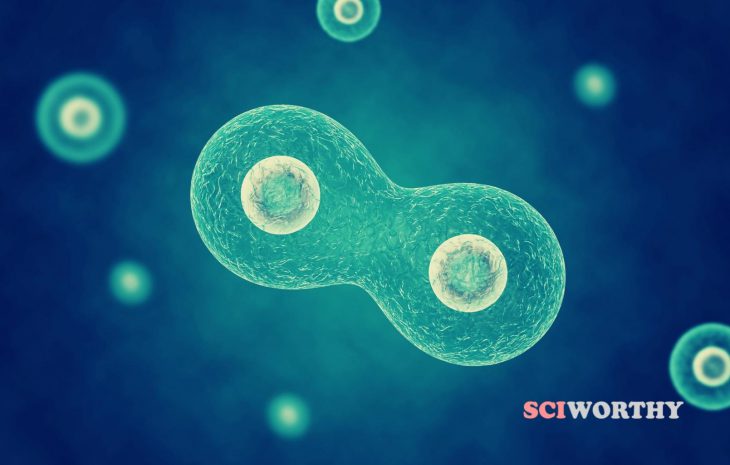Breast cancer affects more than one and ten women worldwide and is the leading cause of death among women. Seventy percent of breast cancer deaths are due to bone metastasis, which is the movement of cancer from the breast tissue to bone tissue. Metastatic cancer cells then gather resources from the new tissue and continue to grow in their new location.
In recent years, researchers have uncovered new insights into how breast cancer metastasis occurs. Researchers from Guangzhou Institute of Oncology recently published a study with findings about how breast to bone metastasis works.
COVID-19 taught the world about mRNA – the most well-studied type of RNA. mRNAs are long strands of nucleotide “letters” linked together by bonds in a long strand. The Guangzhou team found that previous researchers had discovered another type of RNA molecule called circRNA, which has a bond connecting the two ends of the strand, making a loop-like structure. Unusual levels of circRNA are important for tumor formation, because they can make important proteins nonfunctional.
The Guangzhou team, in their own study, found elevated quantities of a unique type of circRNA, known as circIKBKB, in the bone tissue of patients where breast cancer had spread. The researchers took samples from breast cancer that had and had not spread to the bone, and compared their RNA levels. This experiment showed that circRNA, circIKBKB, was present in high amounts in breast cancer that moved to bone but was not high in breast cancer without metastasis.
After the researchers had found the high quantities of circRNA, they needed to test what exactly it affected. To do this, they took breast cancer cells with varying amounts of circIKBKB and injected them into the hearts of mice. This allowed the cancer to settle in the bone as if it had metastasized. When circIKBKB was high in the tumor cells, researchers found that an important process, called osteoclastogenesis, was happening in the body.
In osteoclastogenesis, the body assigns certain cells called osteoclasts to dissolve small amounts of bone tissue. This is necessary because bones are made up of calcium and other minerals which are needed to complete tasks throughout the body. However, in bone, these minerals are in a solid form and can’t be as easily moved around the body. Osteoclastogenesis releases calcium and other minerals from the bones in a form that is easier to transport and use. But, if osteoclastogenesis is overactive, there can be too much bone breakdown.
In breast cancer cells that moved to the bone, the researchers found that the increased amounts of circIKBKB causes large amounts of bone destruction. CircIKBKB stimulates the formation of more osteoclasts. This process has possible outcomes that can give cancer an edge. First, it releases more resources that are used in cell division such as calcium. Second, the cancer can become rooted into the bone as the osteoclasts create holes.
How does circlKBKB do that? Imagine that all biochemical reactions in the body, called pathways, are games of Dominoes. Biochemical pathways tend to have an order in which tasks are completed, the way that one domino must fall before the next one does. If one of the dominoes is missing in the line, the rest of the line will not fall. Cell pathways are similar – if one part of the pathway is missing, then the rest of the pathway does not activate either.
A series of events, like a line of dominoes, ultimately causes circIKBKB to kick start osteoclastogenesis. This series of events which is called the NF-ᴋB pathway. The team also discovered that a protein molecule in that pathway, called EIF4A3, is responsible for the final step or “domino” that forms circIKBKB in a loop. This mechanism may be the key to slowing the growth or beating breast cancer to bone metastasis.
The researchers did find that this inhibitor treatment worked in mice, so it could be a future treatment for human patients. With this kind of inhibitor, the formation of circIKBKB could be slowed down or returned to normal levels by removing the first domino, saving the bone tissue from long term damage and the growth of more tumor cells!


